
A special comprehensive Vistors Guide for Wheelchair Users is available which also gives information on the various access routes available.
The site is set on sloping ground, with steep slopes in places. Access around the site is on rural surfaces, mainly rolled or loose chippings, in keeping with the nature of the site and buildings. Some roads and paths are cobbled and their surfaces may cause some difficulty for visitors who use a wheelchair or have impaired mobility
We suggest that, if possible, visitors using wheelchairs should use those with wide tyres as this makes access easier and smoother. The use of a powered wheelchair or four-wheeled mobility scooter allows access to the majority of the open areas of the site.
A number (but not all) of the main buildings are accessible to wheelchair users as ramps are available for people to get inside the houses.
The Museum has lots of seats around the site, which cater for visitors who tire easily or need to take things more slowly to enjoy the Museum at a more leisurely pace.
  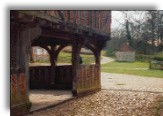 Set in 50 acres of beautiful Sussex countryside is a very special place to wander amongst a fascinating collection of nearly 50 historic buildings dating from the 13th to the 19th century, many with period gardens, together with farm animals, woodland walks and a picturesque lake.
Rescued from destruction, the buildings have been carefully dismantled, conserved and rebuilt to their original form and bring to life the homes, farmsteads and rural industries of the last 500 years.
Wander through these exhibits at your leisure - a majestic timber framed farmhouse from Kent; a striking market hall from Hampshire; a Victorian school; a medieval shop; carpenters, plumbers and brickmakers workshops; barns; a granary and a tread wheel from the South Downs.
Many of the interiors have been furnished, recreating the way the buildings were used by their owners centuries ago: seven historic gardens show the herbs, vegetables and flowers grown to meet the needs of rural households from medieval to Victorian times..
Set in 50 acres of beautiful Sussex countryside is a very special place to wander amongst a fascinating collection of nearly 50 historic buildings dating from the 13th to the 19th century, many with period gardens, together with farm animals, woodland walks and a picturesque lake.
Rescued from destruction, the buildings have been carefully dismantled, conserved and rebuilt to their original form and bring to life the homes, farmsteads and rural industries of the last 500 years.
Wander through these exhibits at your leisure - a majestic timber framed farmhouse from Kent; a striking market hall from Hampshire; a Victorian school; a medieval shop; carpenters, plumbers and brickmakers workshops; barns; a granary and a tread wheel from the South Downs.
Many of the interiors have been furnished, recreating the way the buildings were used by their owners centuries ago: seven historic gardens show the herbs, vegetables and flowers grown to meet the needs of rural households from medieval to Victorian times..
 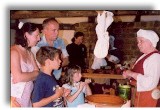  See bread, pottage and sweetmeats being prepared in the working Tudor kitchen, you may even be invited to sample the results.
Pause at the working water mill where stone ground flour is produced daily, experience a recreated Tudor farm, enjoy a picnic by the millpond or a walk in the woods. Delight in the company of our rare and traditional breeds of farm livestock - working horses, cattle, sheep, pigs and poultry. See traditional farming in action and heavy horses at work.
Demonstrators regularly show their skills and everyone you meet will be happy to talk about how people lived and worked. Discover the skills of the early carpenters, find out about traditional building techniques and learn how we help to conserve rural crafts.
See bread, pottage and sweetmeats being prepared in the working Tudor kitchen, you may even be invited to sample the results.
Pause at the working water mill where stone ground flour is produced daily, experience a recreated Tudor farm, enjoy a picnic by the millpond or a walk in the woods. Delight in the company of our rare and traditional breeds of farm livestock - working horses, cattle, sheep, pigs and poultry. See traditional farming in action and heavy horses at work.
Demonstrators regularly show their skills and everyone you meet will be happy to talk about how people lived and worked. Discover the skills of the early carpenters, find out about traditional building techniques and learn how we help to conserve rural crafts.
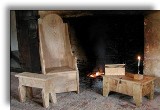 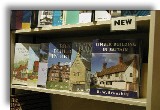 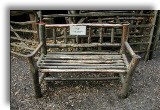 Hens peck in the straw, woolly faced sheep chew the downland grass and Shire horses work in the fields. Enjoy the rhythm of the traditional countryside and unspoilt landscape.
For a complete contrast visit the Downland Gridshell, the Museums workshop and store for supporting collections - in an amazing award-winning architectural tour de force, the first timber gridshell in Britain. Tours daily at 1.30pm when the Museum is open.
Children will enjoy the freedom to roam in safety and gain hands-on experience of the Museums buildings, gardens and animals
Hens peck in the straw, woolly faced sheep chew the downland grass and Shire horses work in the fields. Enjoy the rhythm of the traditional countryside and unspoilt landscape.
For a complete contrast visit the Downland Gridshell, the Museums workshop and store for supporting collections - in an amazing award-winning architectural tour de force, the first timber gridshell in Britain. Tours daily at 1.30pm when the Museum is open.
Children will enjoy the freedom to roam in safety and gain hands-on experience of the Museums buildings, gardens and animals
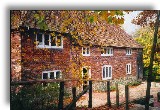 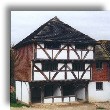 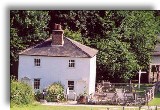
Latest News
Please Click Here for further information
Admission Prices
Please Click Here for further information
Opening Times
Please Click Here for further information
Group Visits
Please Click Here for further information
How to Find Us
Please Click Here for further information

|
















